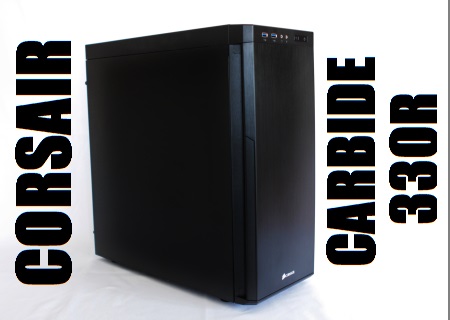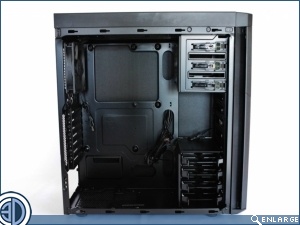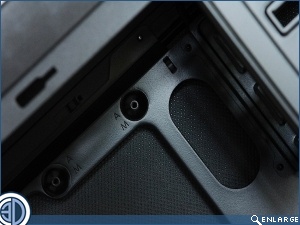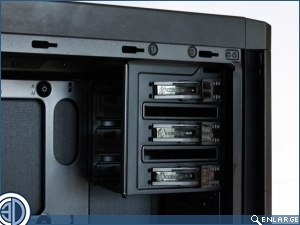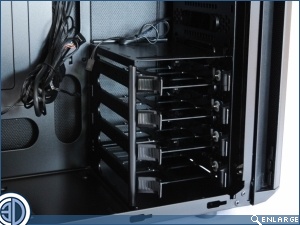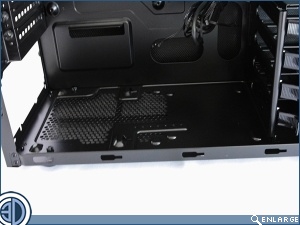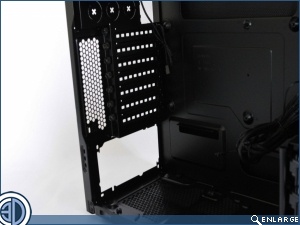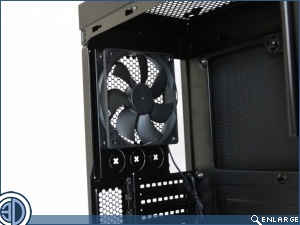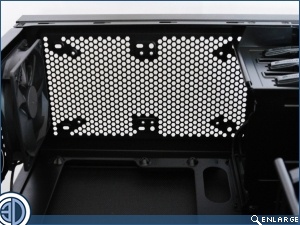Corsair Carbide 330R Review
Â
Up Close:Â Interior Overview and Drive Bays
Those of you familiar with the 300R, or who read Tom’s review of it back in March of 2012 will readily recognise the interior of the 330R. The larger than average CPU cut out extends over the rear of RAM area, and although the cable management holes are not grommeted they are nicely formed with rolled edges. Unlike the 300R however both of the side panels are lined with a heavy woven rubber/neoprene sound absorbent material. Corsair have also opted for raised motherboard nipples instead of a separate stand-offs, which will invariably make fitting your motherboard less odious.
At 495x210x484mm the 330R isn’t exactly huge, it is though still able to accept CPU coolers up to 160mm in height which should be plenty for a case of this type.
Â
Continuing the tool free theme the 3 x 3.25″ bays will not require you to whip out the screw driver to secure your devices. Arrising from the base of the case there is a bank of 4 internal drive cages, with each tray able to hold either a 3.5″ (tool free) or a 2.5″ (going to have to whip the screwdriver out). Above the cage is a gap which at first looks like it should house another drive cage. It is in fact deliberately left empty allowing GPUs of up to 450mm in length to be accepted.
Â
The base of the 330R has a large ventilated area for PSUs which will be ably supported by rubber topped mounts. The PSU cut out is clean being devoid any sound or vibration dampening material around. The seven vented expansion bay covers are held in place by black thumb bolts, sitting as they do next to a meshed ventilation area
Â
Up in the top corner we find a single black 120mm fan sited above three removable tubing hole blanks. With the roof cover removed we get a good view of the large ventilation area at the top of the case. The holes for two each of either 120mm or 140mm fans don’t appear to be off set, but the distance from the roof the motherboard does seem a little bigger than on the 300R so perhaps a rad up here is an option.  Rest assured we’ll find out when we get to the build section of the review.



